How To Fly Fish A Two Fly Setup
Fishing two flies and even three flies can double your chances of catching fish. Multiple fly rigs cover different depths and multiple insect hatches at one time.
Using multiple flies can be an incredibly effective and enjoyable way to fish! The practice offers a number of benefits but also has some downsides as well. We hope this post shines some light on why, when, and how to use multiple fly rigs with dry flies, emergers, and nymphs.
Table Of Contents

An Important Notice
Before fishing multiple fly rigs, make sure to check state and federal laws. In many places, you can fish only fish one fly or at the most two flies. While multiple flies give you an advantage ensure that you are fishing ethically and following all wildlife regulations.
The Pros and Cons of Fly Fishing Multiple Flies
There are advantages and disadvantages to fishing multiple flies on a single leader when fly fishing. Tandem fly rigs can be used when fishing dry flies or nymph fishing. We will cover the good and bad of fishing flies in a tandem rig.
The Pros Of Fishing Tandem Rigs
First, fishing with multiple flies allows an angler to cover a wide variety of insects that may be present on the water. This doubles your chances of presenting the correct food pattern imitation to a feeding trout.
As we covered in many articles before, when arriving at a river to fish, the wise fly fishermen will do a quick investigation of streamside bushes to see which aquatic insects are present. In the heat of the fishing season, there could be multiple species of bugs present. They appear in different sizes, shapes, and colors: caddis, mayflies, stoneflies, Yellow Sally’s, midges, and even terrestrials like grasshoppers are present.
Choosing two patterns that represent the two most abundant insects in size, shape, and color is an excellent place to start when choosing which flies to fish. Choosing two flies of either the same species insects representing two different phases of the hath lifecycle, or choosing two different flies that represent two different insect species, doubles our chances of presenting the correct insect to a feeding fish.
Secondly, an angler can present flies at varying depths in the water column. Depending on how we weight the flies and position them on the leader, we are able to fish different portions of the water column in a single cast. Not all fish hold in the same water or at the same depth. A multi fly rig presents flies at to different fish at the same time.
Trout will hold in different parts of the water column. At any one time, some fish are looking up at the surface of the river, some hold mid-water columns off the back of gravel shelves, and some occupy deep water at the back of a deep hole. Presenting tandem fly rigs in both dry fly and nymph fishing scenarios allows us to cover multiple levels of the river in one cast.
Third, when fishing two dry flies, the point fly or first fly often acts as a sighter for the second smaller fly. The second smaller fly is often invisible to the naked eye or very difficult to see. With a large dry point fly, anglers are given a visible target that is easy to see and can detect strikes on the smaller fly.
The Cons Of Fishing Tandem Rigs
First, the draw back for fishing multiple fly rigs is that more tangles often result in a poorly casted multi fly presentation. I recommend to anglers new to the sport start with one fly and graduate to a simple two fly rig.
With just one fly, it is arguably harder to catch fish. However, nothing is more frustrating as a beginner fly fisherman than constantly untangling line. Start simple, master control of the fly line, and then graduate to a more technical tandem fly rig.
Second, we sacrifice accuracy when presenting fly patterns in tandem. This is most noticeable when fishing a dry dropper rig. Oftentimes when fishing a hopper dropper rig, the scenario requires anglers to cast tight to the bank or cover. A long dropper hanging off a large piece of foam will inhibit tight cast to the bank. Inches count, and they are oftentimes the determining factor as to whether your flies are productive. Cutting off the dropper and fishing a single piece of fam tight to the bank can make a huge difference when fish are extremely tight to cover.
Multi Fly Terminology
Before we go any further, it is important that I clarify some terminology, so that we are all on the same page.
The leader is the tapered clear line that we attach our fly to. We can lengthen our leader and add flies to the leader by adding tippet. Tippet material is a clear nylon or fluorocarbon line that we tie into the leader to create knots where we can add a split shot or add length to the leader to reach our desired length.
The first fly that we add to the leader is called the point fly. It is called “the point fly” because this fly will be diving deepest into the water and will act as your heaviest weight at end of your rig. The point fly is important because in many rigs we add additional to the point fly and use it as an anchor to add the second fly in tandem fly rigs. The second fly is often referred to as the dropper fly.

The advantage of this rig is that both the point fly and the trailing fly will be at the bottom. This allows you to have two patterns at the same depth, which is great when trout are hugging the bottom while feeding and you want to offer multiple options. This often happens when the water is a little colder, such as following rain or some snowmelt runoff. Trout won’t be looking upwards so your flies will perform best at the bottom. Plus, two flies at the same depth cover a larger area of the water so your two flies will spread out to potentially drift through two feeding lanes.
How To Rig Multiple Fly Rigs
As we stated before, we can fish tandem flies in both nymph fishing and dry fly fishing. We will cover multi-fly nymph rigs first. These fly rigs will cover fishing scenarios for fishing flies sub-surface.
The goal is to catch more fish, while nymphing under a strike indicator is often viewed as less glamorous than dry fly fishing. It is my preferred method because it catches fish. I have even caught two fish at once on two fly rigs!
Two Fly Setup Option 1 – Attaching To The Eye Or Bend Of The Hook
I prefer to fish my two fly rigs on a 7.5″ 3x leader. The reason for this is because I lengthened my leader to 9 feet using fluorocarbon tippet material. I usually fish my double nymph rig a heavy point fly. A 3x leader with weight forward floating fly lines has the strength and power to turn multiple flies over to make a proper presentation. Of course, this can be changed depending on the water and conditions that you fish.
How To Tie Two Flies On One Line – A Basic Double Nymphs Set Up
For my basic deep nymph rig, which is a good all around set up for both beginner and expert anglers, I like to fish slightly heavier leaders than most. Of course, tippet size and leader requirements can be changed depending on the water that you fish. I spend most of my time fishing large Western tail waters, like Idaho’s South Fork of the Snake River.
Using a 7.5 foot 3x monofilament leader, I prefer to add 18″ to 24″ of 4x fluorocarbon tippet material to the leader. I connect the leader to the tippet with a double overhand knot or blood knot. You could also use a tippet ring if that is easier. Fluorocarbon does not refract light so it is invisible under water. This gives you an advantage over weary fish and further confidence in your nymph rig. I use 4X tippet so that the taper of the leader is continued, it cast well, and turn the flies over in an efficient manner.
Tie your first fly, or point fly, to the end of the tippet that we added using an improved clinch knot. I love to fish Pat’s rubber leg in size 6 orange and black. A Pat’s rubber leg is a heavily weighted fly and helps the rig get down deep. Next tie on an additional 18″to 24″ to the point fly. You can add this additional tippet section to two places: the eye of the hook, or the hook bend. I prefer to add it to the eye of the hook. The reason for this is that when added to the hook bend, I believe that the second fly can sometimes act as a rudder and create unnatural drag on the fly. Using a clinch knot, tie the final fly to the end of the tippet material that we added to the point fly.
The last step is to add weight and a strike indicator. As a general rule of thumb, add the indicator to 1.5X the depth of the water that you are fishing. Indicators are important because they telegraph strikes. Choose an indicator that is delicate to detect strikes but isn’t constantly being drowned.
Adding weight is critical to catching fish in a multi-fly rig such as the one we have outlined above. Whether we fish just one fly or ten flies, it is futile if none of the flies ever reach the fish. Adding weight solves this problem. The amount of weight you will add depends on many factors: water speed, water depth, and the position of the fish.
How Much Weight Should I Add To A Nymph Rig?
When fishing more than one fly, the added weight of non non-toxic lead shot strategically placed on the leader helps a multi-fly rig punch through swift surface currents and reach the strike zone in an efficient manner. In the rig outlined above, our split shot is placed above the knot and section of tippet that we added to our leader. The overhand knot or blood knot in the leader keeps the weight from sliding down the leader and onto our first fly.
Finding a perfect balance in weight is critical to presenting a double nymph rig with the proper dead drift presentation. Like the indicator, the goal is to strike a delicate balance: not enough weight and the flies never reach the fish, too much weight and the flies snag on the bottom or drift un-naturally. Carrying multiple sizes of shot allows me to subtly add and subtract weight so that our chosen fly combinations skip ever so gently across the bottom of the river. I like to watch my indicator as a gentle ticking in the bobber is a wanted sign that our weight combination is just right.
You can also add weight by adding or removing nymphs with different size beads.

Two Fly Setup Option 2 – Attaching to a Tag End of the Leader
Our second option for fishing a two-fly setup while fishing wet flies is to add our fly to the tag end of the tippet. The same basic leader and tippet described above applies here. However, in this setup, when we attach the 4X tippet to the end of the 7.5″ 3 X leader with an overhand knot or blood knot, instead of clipping both tag ends, we are going to only clip one tag end and leaving 5″-6″ of tag end.
The advantage of this rig is that the anchor fly will be at the bottom while the dropper fly will be higher in the water column. This allows you to have two patterns at two different levels, which is great when you have trout feeding in the upper water columns rather than hugging the bottom.
This rig involves attaching the smaller nymph to the leftover tag end. Then, the heavier fly is going to be fished as our lower fly. Choose a heavier nymph pattern as our lower fly. This is often referred to as “drop shotting.” The advantage is the heaviest fly in constant contact with the bottom of the river. It is easier to detect strikes, you don’t need to add weight, and the smaller single fly is presented at different depths higher in the water column. This rig works well in heavily pressured areas where fish see lots of other flies fished in a similar manner.

What Is The Purpose Of A Hopper-Dropper Setup
If you are looking for a fly rig that can cover both dry fly and subsurface hatches, then a hopper dropper rig is ideal for such a situation. The hopper dropper rig is excellent for prospecting for fish in shallow water, fish holding near the banks and in riffles, and for covering both portions of a hatch.
Consisting of a buoyant fly as the rig’s point fly, you add a tippet section to the dry fly in order to accommodate sub-surface nymph patterns. Essentially, we are replacing the indicator on a nymph rig with a dry fly that resembles a natural fly in the hopes that we will entice surface eats as well as subsurface takes on our dropper fly.
How To Rig A Hopper Dropper Fly Setup
When fishing a dry with dropper flies, casting accurately is critical to presenting the flies to the target. For this reason, I prefer a shorter leader either 6 foot or 7.5 foot in a 2X or 3X leader. The stiffer leader turns flies over and allows for easier casting. In this rig, I do not add any tippet to the leader. I prefer a straight mono leader with a weight-forward floating fly line. The simpler the better.
How Big Of A Dry Fly Do I Need To Suspend A Nymph?
The setup is simple. Tie your large Chubby Chernobyl, Stimulator, or Streambank Hopper to the end of your leader. When choosing your point fly I prefer foam flies with a large synthetic or Antron wing. Resistant to sinking, they float heavy droppers well. Keeping your point fly floating is always a challenge as the fishing day continues and the fly becomes water logged. Ensure you treat your fly with floatant prior to getting it wet.
Next, take an adequate section of tippet that matches the size of your dropper fly and tie it the bend of the hook of your point fly. This tippet section can be anywhere from 12′ to 36″. The length of your dropper depends on the water depth you believe fish are holding in. Tie your dropper fly to the end of the tippet that you added to the first fly with an improved clinch knot of a non-slip loop. I prefer jig hooked tungsten bead head patterns. The jig head CDC pheasant tail is my favorite fly. It sinks to depth quickly and will catch fish universally well just about anywhere.
When Should I Use A Hopper Dropper Fly Setup?
A dry dropper setup is effective when hatches begin to develop and both during and after hatches happen. Late in the morning when the water begins to warm, aquatic insects begin the hatching process of making their way to the surface of the river. Although they are not present on the river’s surface, they are actively moving there. This will provoke fish to move out of the safety of deeper water and into prime lies. These are areas that offer both safety from predators and access to food lanes.
Although fish might not be actively rising , they are aware of food in the mid to upper water column. This is the time to fish a dry dropper rig. Targeting fish in shallower water: drops offs, shallow banks, undercut banks, and the back sides of gravel bars are effective tactics.
During hatches, fish are actively rising. It is at this time that the dry dropper also shines. While many fish are eating insects on the surface of the water, they will still target nymphs. Dropper flies fished shallow will continue to produce fish.
The dry dropper is especially effective when fishing banks. Salmon flies migrate to the banks. Fishing a hopper dropper tight to cover and along grassy banks is an effective tactic. Fly choice matters in this rig. Choose a large buoyant Chubby Chernobyl foam fly that will float a Pat’s Rubber leg usually does the trick. Fishing tight to cover and swinging the rubber leg under overhanging limbs will produce fish.
Other excellent fly options late in the summer are to fish a true hopper pattern with a caddis larva or small cdc jig head pheasant tail. The Stream Bank Hopper or Mad Hopper both float large and small flies well with a dropper attached. Fishing tight to banks is key and sometimes fish will only eat the foam dry fly. This is the sign that it is time to cut off the dropper and fish true dry fly patterns.
Double Dry Setup
I always like to fish two dry flies when the occasion presents itself. When fish start refusing your nymphs, and will only eat dries then it is time to ditch the double nymph setup and go with multiple flies on the surface. Fishing drys with more than one fly can be accomplished in many different ways, but these are two of my favorite rigs.
When fishing active hatches on a riffle or flat water, I prefer to fish a two-fly rig with a true dry fly as my point fly and and small emerger behind the first fly. Delicate presentation is key in these situations, so I go with a longer lighter leader.
I like to choose a 9 foot 4X leader. I then add 18 inches of 5X tippet where I tie my first dry fly. This longer leader setup makes getting a drag-free natural drift easier. However, you do lose a bit of casting accuracy.
Hands down my favorite dry fly is an elk hair caddis. The elk hair caddis is the jack of all trades and can be fished all over the place during many different hatches. Other excellent fly options for point flies are really any parachute style dry fly that have a visible post and matches the size and color of other natural insects on the water. Parachute style flies lie flat on the water like a natural fly, but they are easy to see.
Next, take 18″ to 24″ of tippet and attach the tippet to the bend of the first hook. Then add your second fly to the end of the additional tippet. I prefer to fish an emerger or cripple pattern. While the difference between the surface film and the surface of the water is mere millimeters, fish will key into both insects on the surface of the river and insects in the surface film of the river. This two-fly dry fly setup covers both areas of interest. The visible point fly is critical because often, times the second fly pattern rides so low in the water that it is invisible to the naked eye. Your first fly works as a sighter for potential strikes on the second fly.
Double Dry With a Tag End
During the salmon fly hatch or when fish are holding tight to banks, I like to fish a two fly dry rig with a large piece of foam. Presenting your large foam fly tight to the bank is critical. An extra dropper can get in the way and will often snag on stream-side bushes. That being said, we don’t want to miss any fish holding in mid river riffles, on gravel bars, or out on calm flats. This rig allows for us to take advantage of all fishing opportunities.
Using a 6-foot 3X leader, I add a 24 inch 4x tippet to the leader with an overhand knot. You will be left with two tag ends. Trim one of them and leave 3 to 4 inches of one of the tag ends uncut. Attach your piece of foam to the end of the leader. Some of my favorites are the Chubby Chernobyl, Circus Peanut, Rainey’s Hopper, Dave’s Hopper, Fat Albert, and Stimulator to name a few. Fly selection here is really up to you, just choose something that matches the hatch and can float well, so you can fish rougher water along the banks.
Next, choose a small dry fly to tie to the tag end that we left in our leader. I prefer an elk hair caddis, parachute PMD patterns in pink, or an X-Caddis emerger pattern. The advantage of this rig is that it allows you to cast the foam fly tight to cover without interference, but then also allows the angler to prospect in places that you would not normally present smaller dry flies.
Fly Fishing Made Easy 👍
Our Quarterly Fly Club ships 1,000’s of flies to anglers all across the United States. Receive curated fly assortments selected for the season with in-depth articles on how to fish them. Great for beginners to learn and for intermediates to discover new flies.



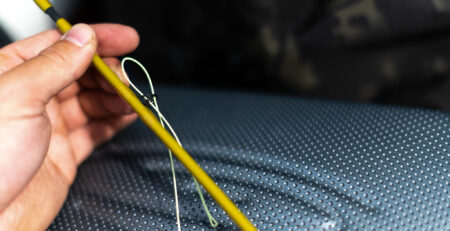

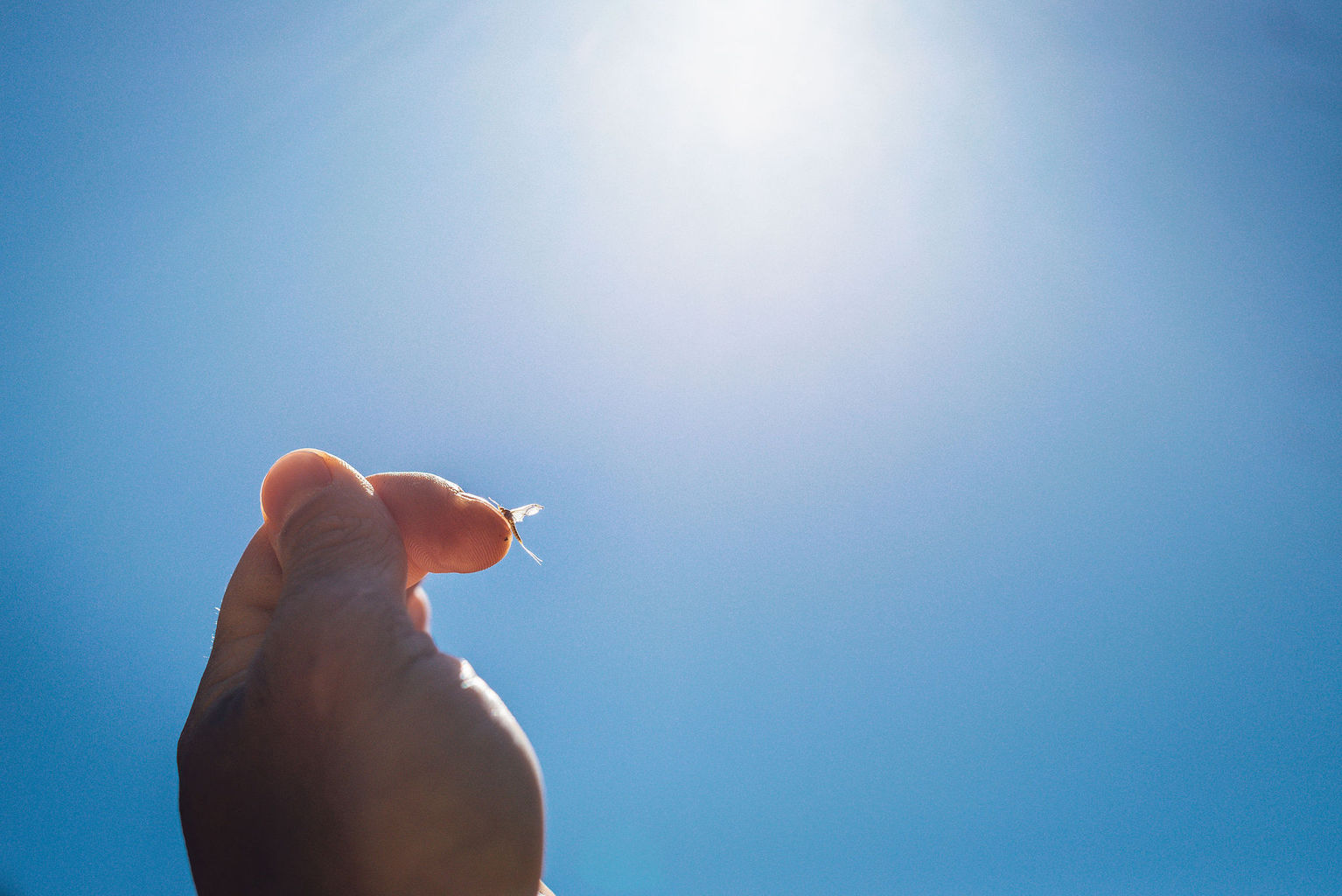

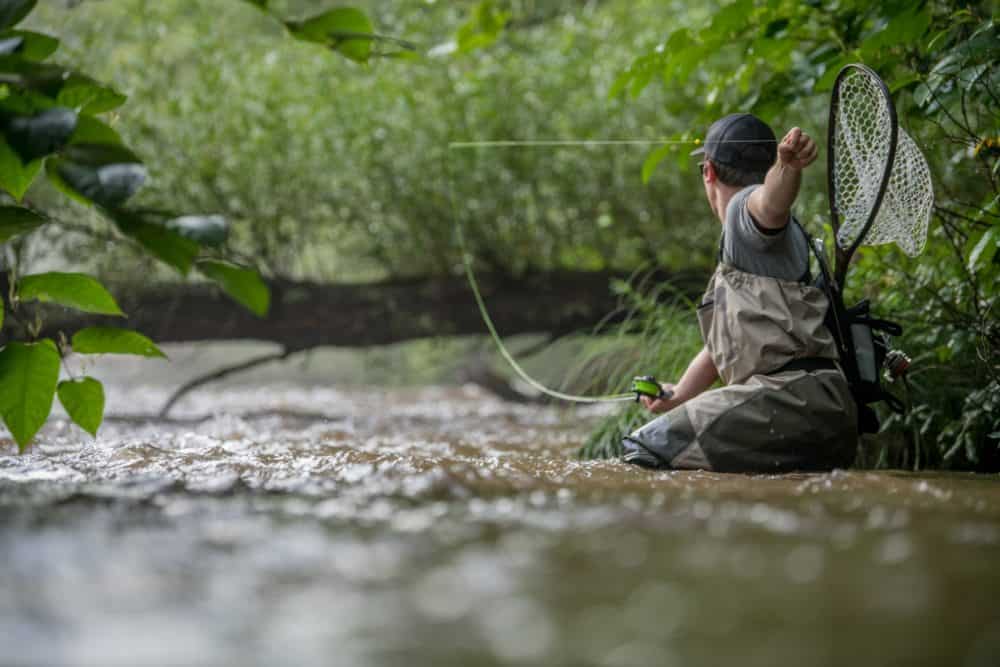
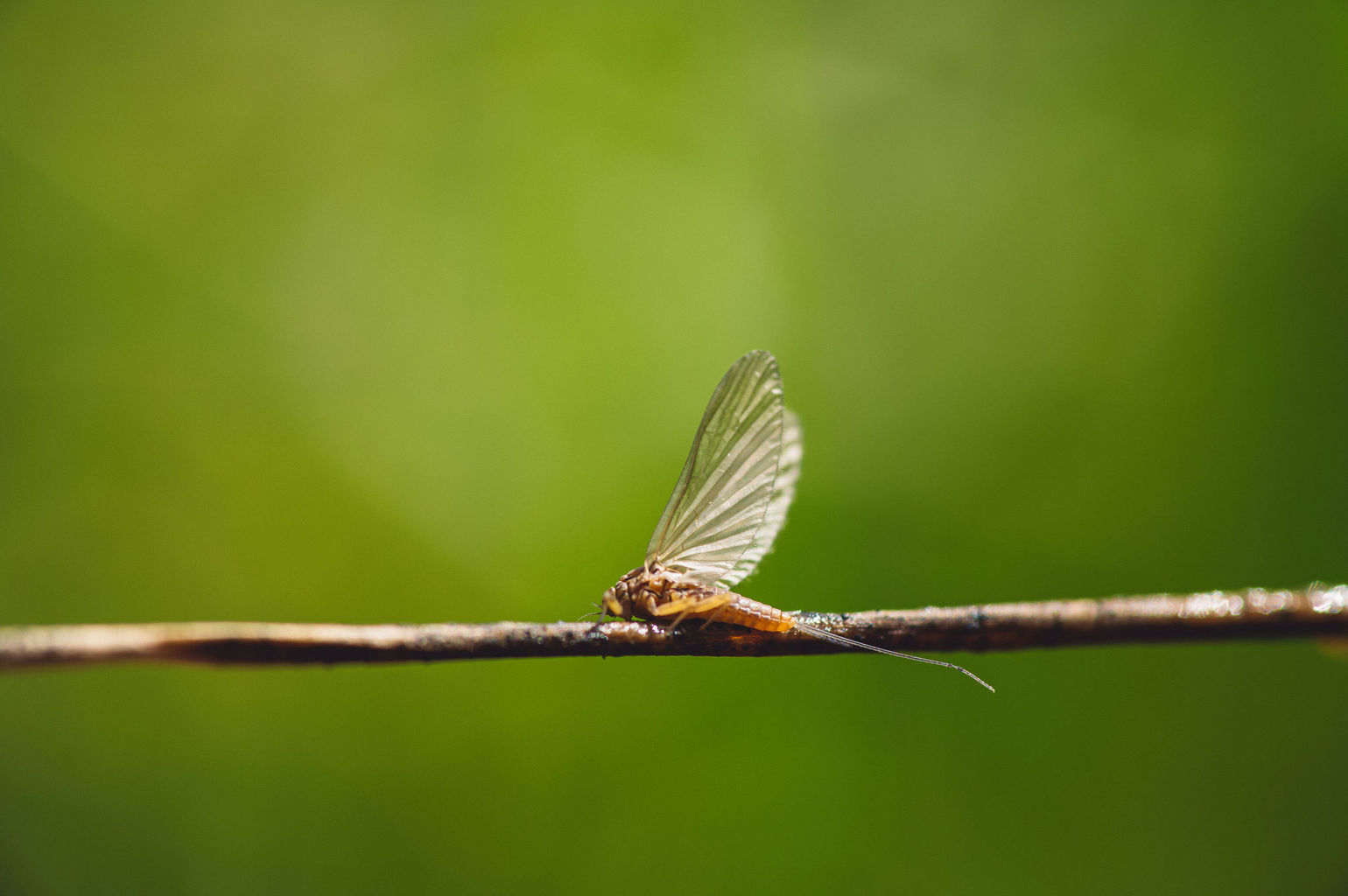
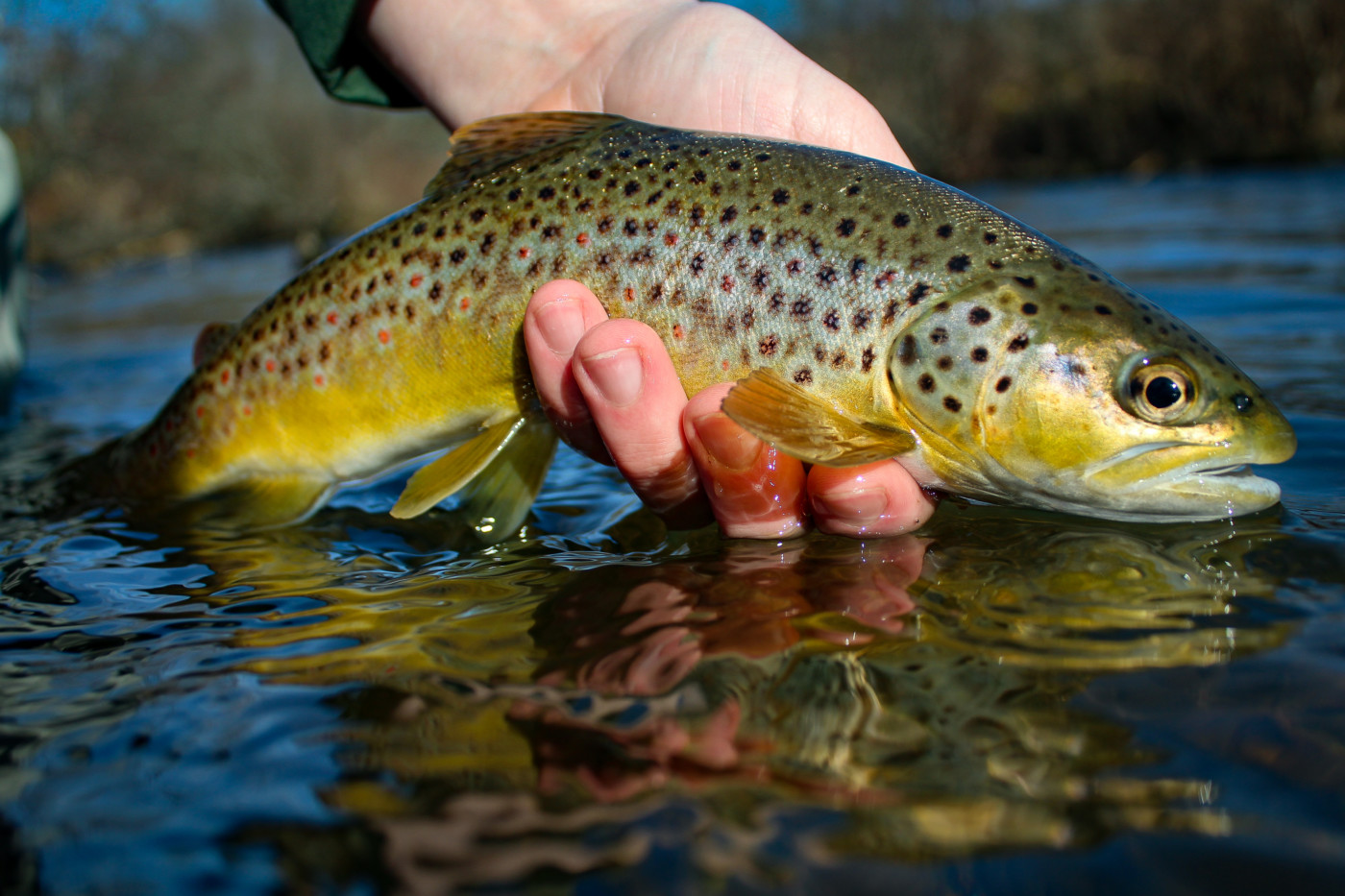

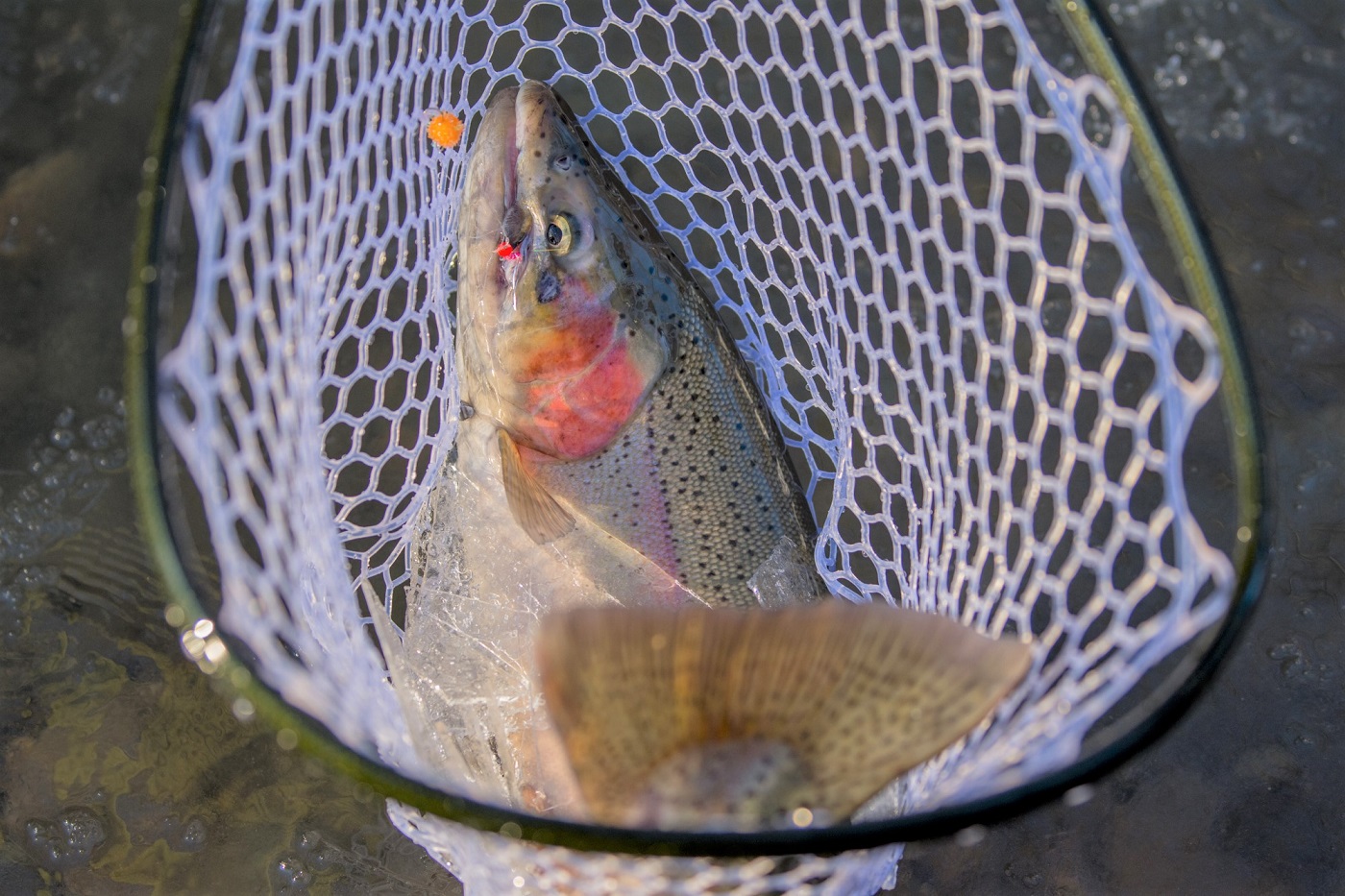
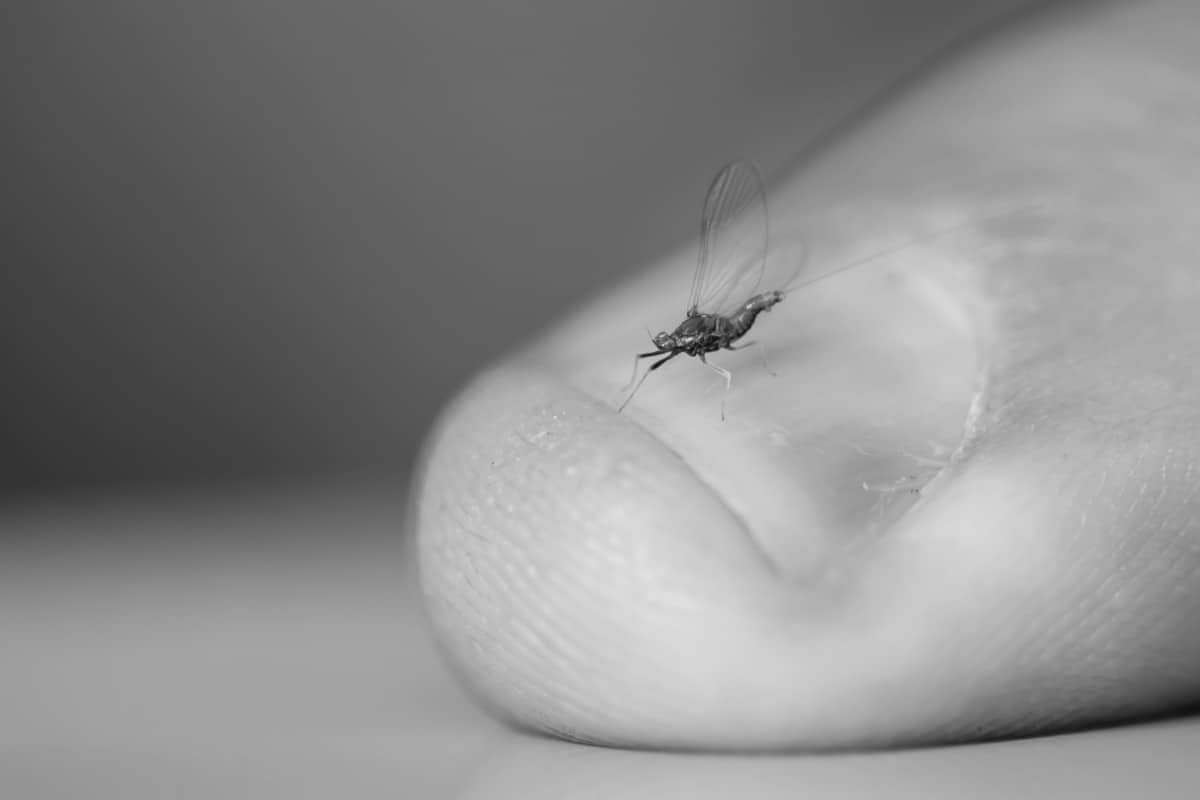


Comment (1)
Great Article Nolan! Cold Nov. weather here in Maryland. Ready to tight line a dual nymph rig at the Gunpowder River in northern MD. Thanks for the tips!
– Mike
Comments are closed.